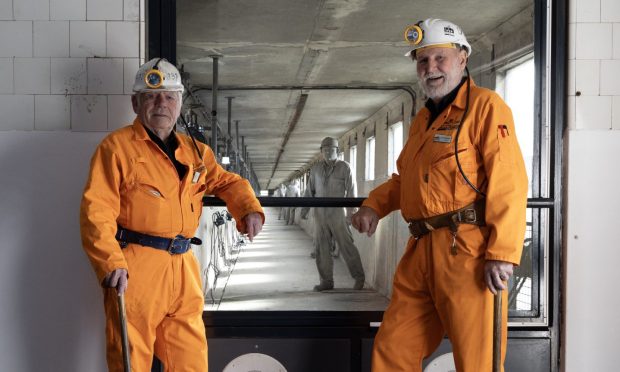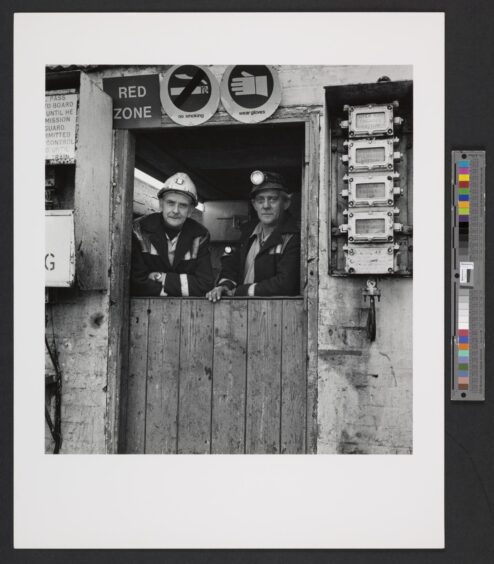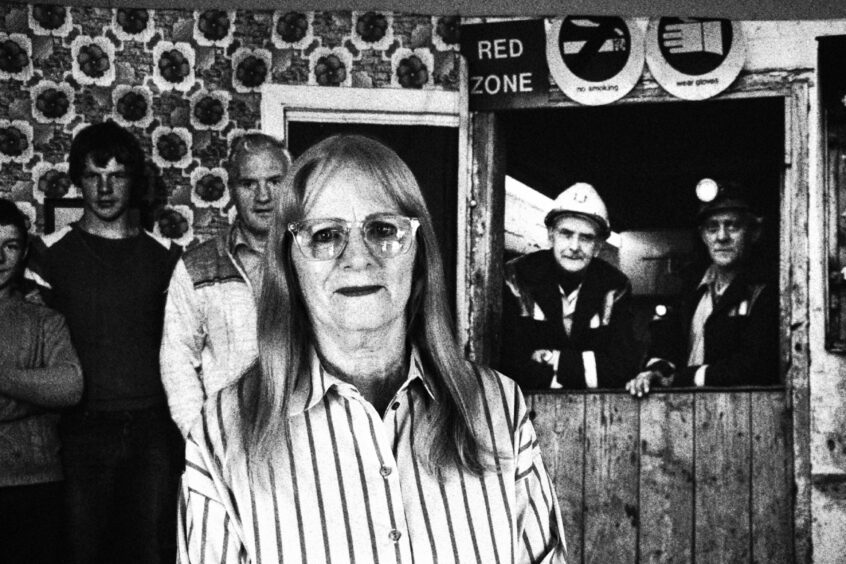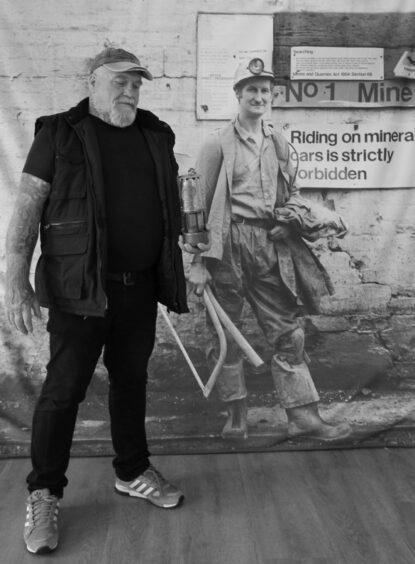
The era of coal is effectively over in Scotland, but stories of communities where collieries stood at their heart are long from being finished.
A new exhibition at the National Galleries of Scotland (NGS) has brought the mining industry’s history and lasting effect right up to date with input from the people who shaped it and continue to be impacted by it.
Revisiting and updating photographs from the 1980s, Before and After Coal, a collaboration between NGS, artist Nicky Bird, and mining communities, documents the real lives and experiences of people in the coal heartlands of Fife, East Ayrshire and the Lothians.
“There’s sense of this being the time now to tell this and make sure the stories are on the cultural map,” Nicky said.
“There’s been an emphasis in the media on the anniversary of the strikes but this is also about the time before that and what this has meant to the participants.
“Remembering fathers and grandfathers, people who lost lives in accidents, the pride of the training and the work and also the values and ethics of the communities, and the ongoing, unfinished business. From the personal to the wider history, it needs to be told.”
Scotland’s mining communities
Going on display 40 years on from the start of the miners’ strikes, the project centred around a collection of images taken by US photographer Milton Rogovin in 1982.
He visited Scotland to capture miners at work at their pits, but also at home during down time with family.
Pivotal to updating and contextualising the photos was the Mineworkings engagement project, where a series of ‘show and tell’ events saw participants share the stories behind Rogovin’s photos, as they recognised their family members and, for some, themselves in them.
Some of those taking part posed for portraits in front of the original images, donning orange miners boilersuits and helmets in tribute.
Schools also contributed, sharing their feelings and understanding of Scotland’s mining past and the impact it has had on them today and could have in the future.
“It was very important to bring in these communities to the project,” said Frances Campbell from NGS.
“It signals a new approach for us, having a very collaborative approach to create content for an exhibition.
“It conveys the richness of all the material we’ve gathered and the collaboration with communities has been at the heart of that.”
Nicky added: “It has been a really important part of the process, repeated visits, spending time in Ayrshire, Fife and Midlothian as well as NGS doing a lot of work in getting communities to come to the gallery – for some people it was the first time.
“Having a two-way street increases the access as well as the contributions to the content, and understanding what should go alongside the works.”
The original project
Milton Rogovin’s work in 1982 was part of his worldwide series of pictures of miners at work.
As well as Scotland and his native US, he visited mines in South Africa, China, Mexico, and Cuba.
Having been struck by his work, Nicky travelled to the Library of Congress in Washington DC where the original contact sheets and letters were deposited.
“I had a really powerful experience looking through them, you got a real sense of his journey,” she said.
“You begin to unfold this portrait of Scottish communities across the coalfields.
“He had photographed women miners in America beforehand and had his method of photographing them at work and at home.
“He had the sense of celebrities and famous people having photographers who gave them a visual voice, but he felt that he was on the side of industrial workers.”
Nicky decided to revisit and update the collection by meeting with individuals and families connected with the original photographs.
“First of all it was about sounding out individuals and communities about whether there was mileage in this,” she recalls.
“It’s over 40 years ago, there are other things to think about. But that wasn’t the case, it was like opening a door for different individuals and groups to come forward.
“They’d look at the materials but would also contribute their life experiences and understandings, piecing together a missing history.
“People were also talking about what those photographs would have meant, their family history and the pride in being a mining community, as well as the really difficult things that happened during the strike and afterwards, the process of recovery.
“There was quite a complex set of things going on. It was a really sociable process, people could recognise stories, see differences, and reflect on that period of time. It was a real privilege.”
With community engagement at the heart of the new exhibition, the team at NGS are looking at ways they can harness it for similar projects in the future.
“There’s been so much interest in the project and it’s really resonated with a lot of people,” Frances said.
“It’s been amazing to see how it’s grown from photographs by an American photographer in the 1980s and how they’ve resonated with people and communities.
“I didn’t expect the wave of response we’ve got. It’s very exciting looking forward for potential projects we could perhaps look at the collaborative approach for.”
Before and After Coal: Images and Voices from Scotland’s Mining Communities, National Galleries Scotland: Portrait until September 1

Enjoy the convenience of having The Sunday Post delivered as a digital ePaper straight to your smartphone, tablet or computer.
Subscribe for only £5.49 a month and enjoy all the benefits of the printed paper as a digital replica.
Subscribe © Milton Rogovin
© Milton Rogovin © National Galleries of Scotland
© National Galleries of Scotland © National Galleries of Scotland
© National Galleries of Scotland